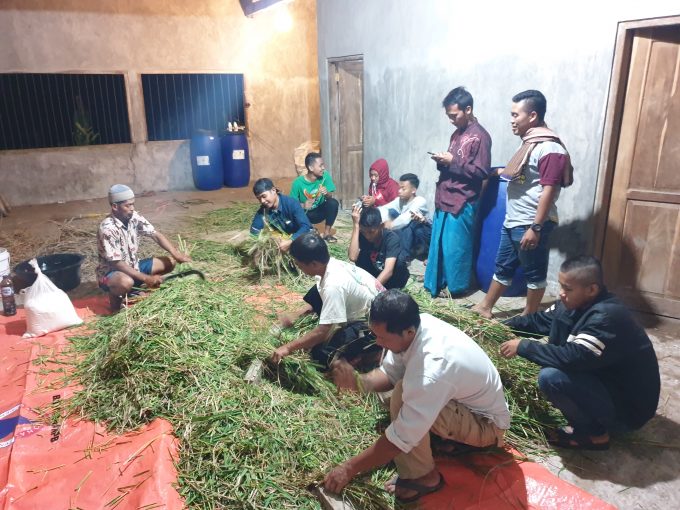
In the dry season, the supply of feed can be a challenge for farmers because of the limited supply of feed. One solution that can be taken is to make a complete fermented feed. This feed is based on forage forage and straw which is of high nutritional value.
“Complete fermented feed is very suitable to be applied during the dry season or when natural disasters occur because it is more practical. In addition, good nutritional content, affordable manufacturing costs, can be stored for a long time, and save farmers time,” said the Dean of the Faculty of Animal Science (FAS) UGM, Prof. Dr. Ir. Ali Agus, DAA., DEA., IPU., ASEAN. Eng said on Monday (5/18).
In the livestock and beef cattle business industry (feedlot), there is a reality in the form of direct use of rice straw. This causes problems because the quantity of rice straw is abundant, but in terms of quality it is still classified as low nutritional because it only contains about 3-4% protein.
“Dry rice straw can be processed into fermented rice straw which is then processed into complete feed by adding other ingredients so that the quality increases, from protein levels 3-4% to 7-8% and resistant throughout the season,” Ali said.
Ali added, the materials used in the complete fermented feed technology are rice straw and several types of concentrated feed ingredients (optional and situational) consisting of rice bran, cassava, copra meal, peanut shells, bread, pollard, mollases, salt, ground yellow corn, “microbial starter”, and calsid. Utilization of agricultural waste can reduce the cost of making feed.
“The complete nutritional value of feed can be regulated by determining the amount and type of mixture. Thus, livestock do not have the opportunity to choose feed, thereby reducing the amount of feed that is not eaten. Complete forage based feed and straw can be applied on a household or industrial scale,” explained Ali.
Complete feed suitable for ruminants, such as cattle, buffalo, goats and sheep. Ruminant animals have a rumen that contains millions of microbes that make it able to synthesize several types of essential nutrients needed to support their needs and production. Ruminant animals are also able to digest sources of fiber, such as grass, leaves, straw, and by-products of agriculture.
“Making complete fermented rice straw-based feed is expected to make farmers no longer need to graze every day. Farmers only need to make complete feed once and can be used for food reserves for a certain period of time depending on their manufacturing capacity. Thus, farmers have the remaining time that can be used to carry out other activities,” said Ali.
Ali Agus added, FAS UGM had implemented complete feed production during the eruption of Mount Merapi in 2010. Complete feed was an appropriate solution at that time that could prevent farmers from breaching dangerous areas to graze for their livestock.
